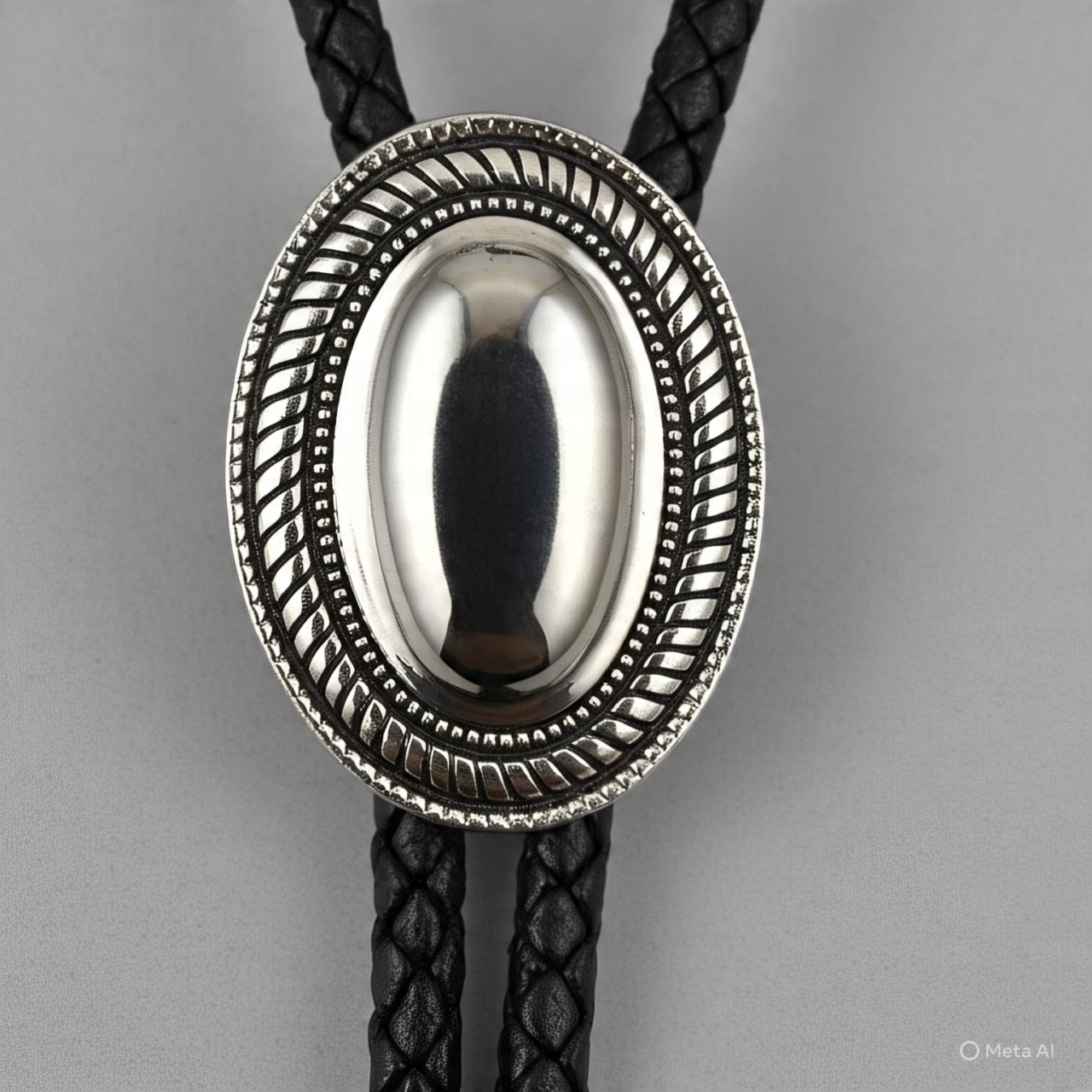Origins in the American Southwest
The bolo tie originated in the 1940s among ranchers and cowboys who needed durable neckwear for hot climates. Legend credits silversmith Victor Cedarstaff with inventing it by repurposing a hatband during a horseback chase. Tribal artisans from the Zuni, Hopi, and Navajo nations then incorporated their iconic silver and turquoise work, turning it into a cultural symbol. By the early 1970s, Arizona named the bolo the official state neckwear.
Why Sweat-Resistant Bolo Ties Matter
Traditional bolo ties used untreated leather and metals that led to:
- Discoloration and breaking down of leather in humidity
- Tarnish and corrosion of metal tips
- Unpleasant odors from moisture retention
- Today’s sweatproof bolo ties solve these issues with smart material choices and retain their classic style.
Engineering Comfort: Modern Materials Breakdown
| Component | Traditional Material | Modern Upgrade | Benefit |
|---|---|---|---|
| Cord | Untreated leather | Moisture-wicking nylon/polyester, waxed leather | No sweat absorption or odor retention |
| Slide/Clasp | Sterling silver, copper | Stainless steel, titanium, anodized aluminum, resin | Tarnish-free, lightweight, corrosion-resistant |
| Tips (Aglets) | Brass | Hypoallergenic steel, powder-coated metal | No green stains or discoloration |
| Coatings | None | Silicone sealant, polyurethane, nano-ceramic layer | Water repellent, UV protection, antibacterial properties |
Why It Matters:
- Sweatproof Cords: Pull moisture away to prevent odor and degradation
- Advanced Slides: Lightweight and tarnish-resistant, even under stage lights
- Durable Aglets: Maintain polish and skin safety over time
- Protective Coatings: Defend against salt, UV rays, and bacteria
Who Benefits from Sweat-Resistant Bolo Ties?
- Performers & Musicians: Stay fresh under hot stage lights
- Outdoor Workers & Festival-Goers: Ideal for dusty, humid conditions
- Warm-Climate Formal Wear: Wedding and event accessories that won’t wilt
- Fashion Enthusiasts: A durable retro accessory for everyday wear
Cultural Revival & Style Trends
Native American artisans are leading a cultural renaissance—blending turquoise, beadwork, and recycled materials into bolo tie design. Brands like Katie Kismet collaborate with tribal silversmiths to create eco-conscious, heritage-rich pieces. This movement aligns with growing demand for authentic cultural fashion and sustainable design.
Trending Styles:
- Western casual: Worn with denim or plaid shirts
- Business chic: Sleek slides for modern suits
- Festival boho: Layered over graphic tees
- Gender-neutral: Versatile designs for all body types
Care & Maintenance for Longevity
Daily Routine:
- Wipe metal parts with a microfiber cloth post-wear
- Air-dry cords flat after exposure to sweat
- Store tips with anti-tarnish strips and silica packs
Periodic Care:
- Recondition waxed leather cords quarterly with a pH-neutral balm
- For turquoise slides, use professional cleaning to avoid damage
- Keep away from direct sunlight to prevent fading or discoloration
💎 Elevating Heritage with Performance
Sweat-resistant bolo ties fuse Southwest tradition with contemporary performance. By adopting moisture-wicking materials, corrosion-proof metals, and Indigenous craftsmanship, they serve as stylish, functional accessories—and cultural ambassadors. Whether your vibe is Ralph Lauren Western chic or eco-conscious fashion, bolo ties now deliver on both elegance and endurance.
Frequently Asked Questions (FAQ)
Q: What makes a bolo tie sweat-resistant?
A: Advanced materials like nylon/polyester cords, stainless or titanium slides, and protective nano-coatings block moisture and prevent odor, tarnish, or degradation.
Q: How do I care for a sweatproof bolo tie?
A: After wearing, wipe metal parts dry, air-dry the cord, and condition leather as needed. Store with anti-tarnish tabs in a cool, dark place.
Q: Are sweat-resistant bolo ties eco-friendly?
A: Many are made using recycled metals and sustainable design practices. Collaborations with Indigenous artisans also honor traditional materials and methods.
By Jess Klintan
Jess Klintan, Editor in Chief and writer here on Sportsrater.co.uk Email: sportsrater5@gmail.com

